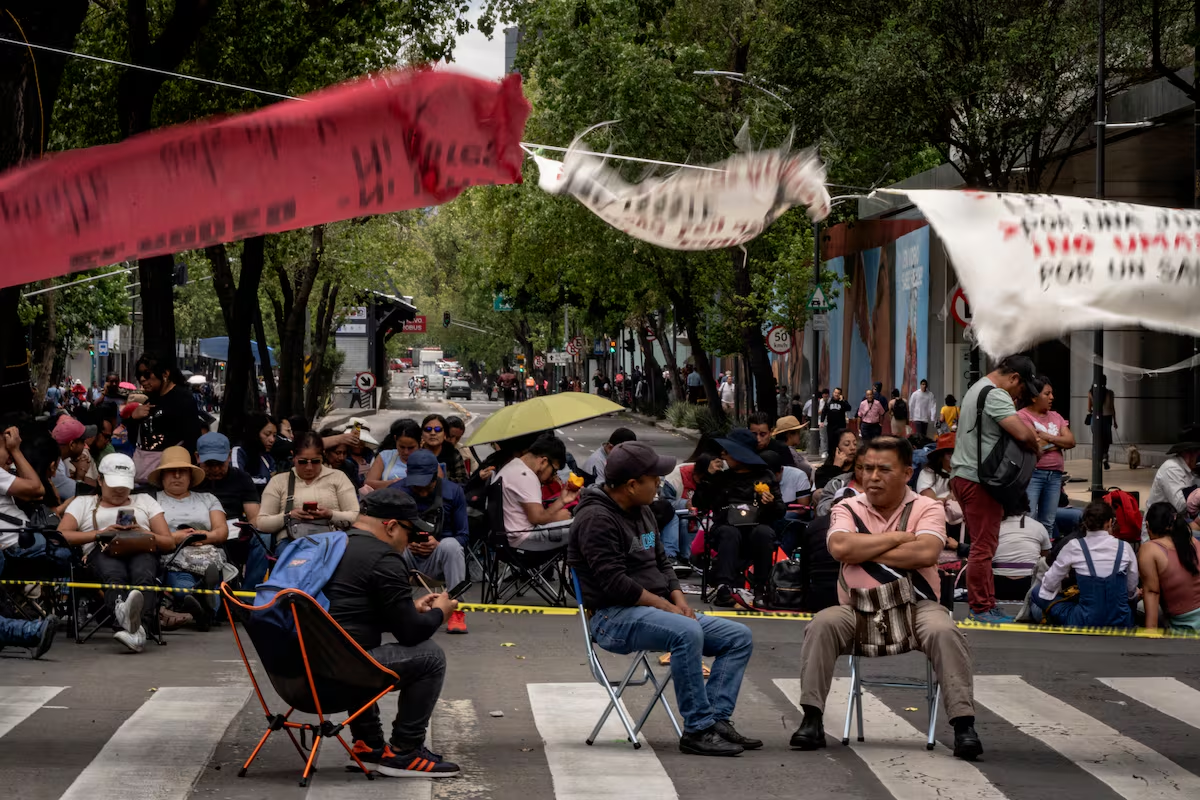
The National Coordinator for Educational Workers (CNTE) announced on Tuesday a new two-day nationwide strike on November 13th and 14th to demand, among other things, the abolition of the current pension system and education reforms. The strike marks the resumption of mobilization efforts that began on May 15 and were suspended in early June after 24 days, after securing certain concessions from executive director Claudia Sheinbaum. “The federal government has violated the agreement it signed with the CNTE,” the teachers stressed in a statement.
At the end of the protest, slogans were raised announcing the possibility of a new mobilization. “We are not tired or failing, we are standing still.” They spent several weeks on strike, but failed to achieve their ultimate goal of repealing the ISSSTE law approved by the former president. Panist In 2007, President Felipe Calderón privatized part of the pension system and created a personal savings system that abolished lifetime pensions. That is the argument they took as their main objective. The previous strike achieved several concessions, including freezing or lowering the retirement age and increasing salaries by 10%.
Interior Secretary Rosa Isela defended the government in a video collected by various media outlets, saying it had responded to teachers’ demands. “However, we reject any demonstrations or threats with political overtones that undermine public peace and distort the fight for better education,” he added. Isela assured that the administration met with teachers in more than 22 working groups and that Sheinbaum spoke with their leaders more than 10 times in the last year. In his speech, he laid out a list of measures agreed with trade unions and called for continued dialogue “so that the right of the people and of girls and boys to be unhindered in their studies is respected.”
Teachers defended the increase they received, saying it was “not consistent with what was announced.” Among the demands of the new strike, there is also an emphasis on the abolition of educational reforms, thus calling for the restoration of the philosophical nature of education, the system of labor exceptions, or the recognition of educational levels such as physical education, special education, and indigenous education. They are also calling for an increase in the education budget, calling for an allocation of 12% of GDP compared to the 4% of GDP proposed in the 2026 spending law.
The CNTE has defended the government as “lying” about the agreement signed after the negotiating table in May and June. And they argue that, contrary to what administration officials have said, the executive order does not address workers’ needs. Sheinbaum reiterated several times during the last strike that while he supports the demands of teachers, traditional allies of the 4T movement, a lack of funding prevents him from reversing the system, which currently relies on the Retirement Administrator (Afores), a private fund that manages the savings of state employees.
Isela said the coordinator had indicated that the mobilization would include blocking the Congress, the airport, the National Palace and access roads to Mexico City. Something similar to what they had already done in previous strikes. The document calling for Section XXII of the National Union of Educational Workers (SNTE) indicates that its members will participate in two forms: a national union (20% of its members participate) and a state union (80%). Participants in the national strike will lay siege to the National Palace at 6 a.m., demonstrate during Mr. Sheinbaum’s regular morning session, and plan to march and sit in on Congress, the location of which has not been disclosed. State strikers plan to take over government institutions and multinational corporations.



